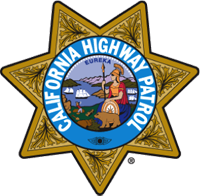
On less than 1 percent of the total farmland in the United States, California’s Central Valley produces 8 percent of the nation's agricultural output by value. During harvest season, more than one-half million farm workers are employed in the region. Following a horrific traffic collision involving the death of 13 migrant farm workers in 1999, California Highway Patrol (CHP) introduced the Safety and Farm Labor Vehicle Education (SAFE) program.
The goal of the SAFE program is to reduce the number of injuries and fatalities attributed to farm labor vehicles (FLVs) in California. To accomplish this, the SAFE program engages in a multifaceted traffic safety strategy of vehicle certification, enforcement, inspection and outreach. Prior to the start of the program, in 1999, there were 37 fatalities resulting from a combination of FLVs and the other involved vehicles. Since program’s inception in 2000, hundreds of unsafe vehicles have been removed from service, and these sustained efforts have resulted in zero fatalities from collisions where a certified FLV was at fault.
To be certified as an FLV, a vehicle must pass a 38-point non-punitive vehicle safety inspection. Vehicles that are used to transport farm laborers but do not meet the definition of a FLV (fewer than nine passengers) are also inspected. Inspections are carried out by commercially trained officers who also undergo further training related to FLV-specific regulations.
Enforcement operations are conducted in agricultural communities daily. Strike force operations, in which SAFE program unit personnel concentrate their efforts in one central location, are particularly effective during the morning and afternoon hours in areas where FLVs use the highway to transport farm workers to and from agricultural fields. During 2014, 1,599 certified FLVs and noncertified FLVs were stopped for moving and/or equipment violations while on public highways.
In 2014, the eight officers assigned to the SAFE program in the Central Valley conducted 440 38-point inspections. Of these inspections, SAFE officers certified 334 FLVs, issued 2,841 enforcement citations, arrested 19 impaired drivers, placed 37 certified FLVs and 42 uncertified FLVs out of service and conducted 11 community outreach events. Additional SAFE program personnel in other parts of the state conducted an additional 525 FLV inspections and issued 215 citations to FLV operators.
The greatest challenge faced by the SAFE program was educational. The SAFE program officers reach out to an array of stakeholder groups—including farm workers, farm labor housing communities, farm labor contractors, growers, Hispanic civic groups, local business owners, local health care facilities, and others who may come into contact with farm workers and the farming industry—in order to enhance the safety benefits of farm workers. In 2014 the officers conducted 11 community outreach events in the California Central Valley.
Particularly important was the need to reach out to the largely Spanish-speaking population. In addition to employing bilingual officers in the program, the CHP initiated a Spanish language outreach effort, dubbed the El Protector program, and coordinated public education and awareness campaigns utilizing Spanish media, community events, and farm labor housing communities to announce safety messages.
In the three-years prior to the creation of the SAFE program, there were 187 collisions in the California Central Valley involving FLVs, resulting in 20 fatalities to occupants of FLVs. Following the inception of the SAFE program, no certified vehicle has been the cause of a collision resulting in fatalities.
